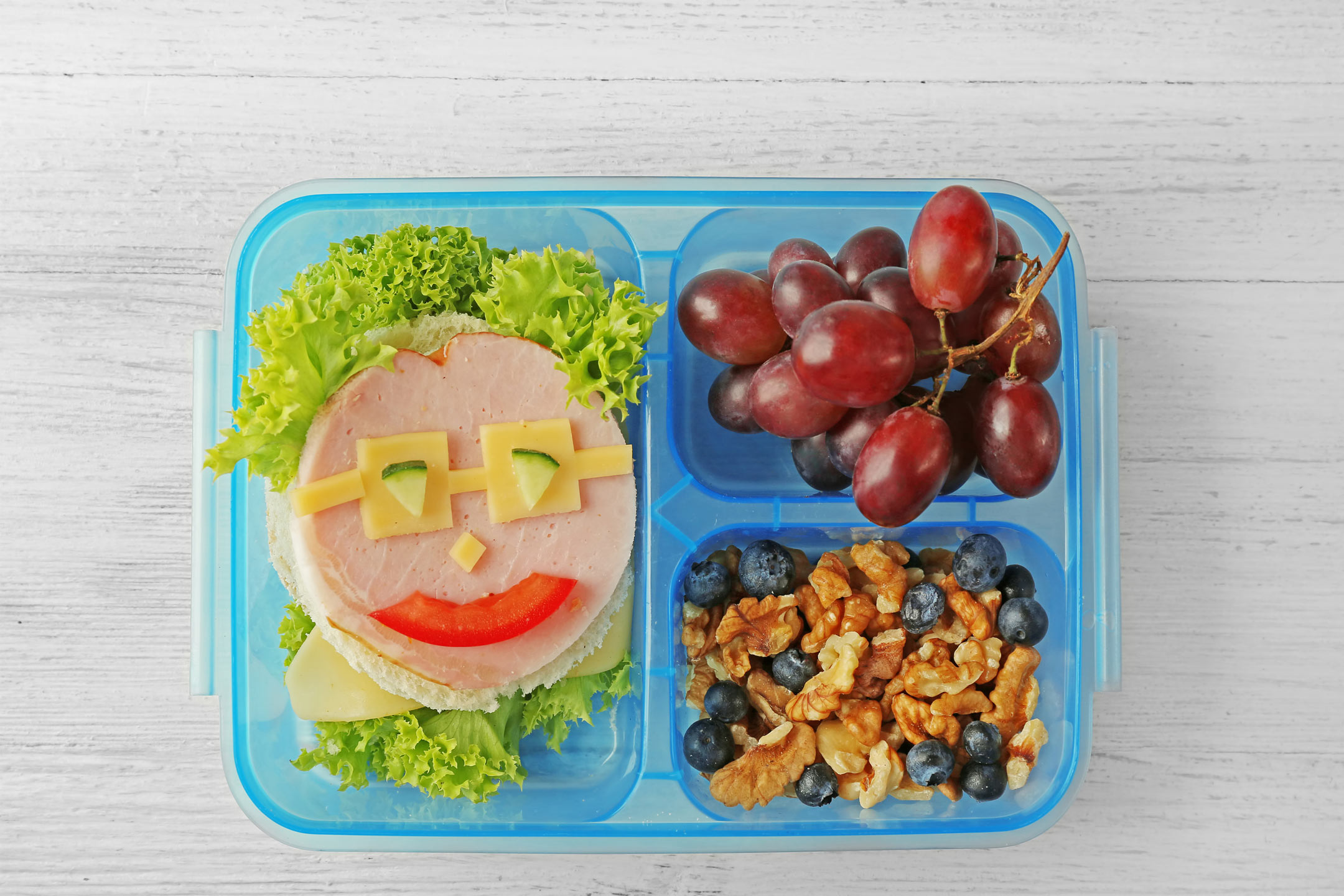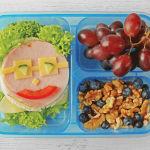
15 Jan Thinking Inside The (lunch) Box
Jennifer O’Dea serves up some food for thought as our children are about to start the new school year.
Recently I was invited to give a talk to a large group of parents and children at the annual school orientation. The really noticeable thing about this group was the palpable anxiety and swinging emotions – among the parents, not the children. When asked what they were going to pack in their child’s first school lunch box, many of the parents, especially mothers, were racked with guilt as they told of how they planned to send a “treat” to make their child’s transition to “big school” (the big, bad world) more bearable. I wondered if packing a chocolate frog, a red snake or a bag of salty chips was really going to help the children settle into their first year at school. But parents wanting to supply comforting treats as a way of reassuring themselves and rewarding their children is a natural reaction to having their little ones removed from their specific brand of care.
My role at the school was not to lecture parents or vet lunch-box menus, but to give the parents some hints about how to achieve healthy eating to promote optimum learning at school. I started with the function of food and nutrients in brain growth and development.
A baby’s brain size almost doubles in the first year of life and 50 per cent of food intake is used exclusively by the brain. This sort of exponential brain growth continues throughout toddlerhood, with a toddler’s brain size increasing by about four centimetres over the period from one to three years of age. By the time children reach their third year of school they have achieved about
90 per cent of their adult brain size (brain growth is not complete until 16 years of age).
Sound nutrition is also directly related to the day-to-day functioning of a child’s brain. The most important nutrients are protein, iron, zinc and fatty acids. Protein such as meat, chicken, fish, eggs, milk, cheese and yoghurt, are especially important for child growth and development. It is an ongoing international tragedy that infant protein-energy malnutrition continues to contribute to poor brain development, low IQ and susceptibility to infections that keep children out of school and unable to learn.
Likewise, a type of ‘Western malnutrition’ occurs among ‘well off’ children in developed countries such as Australia, who eat plenty of the wrong kinds of foods and subsequently do not receive enough of the nutrients required for optimal growth and development.
Breakfast
It plays a crucial role in optimising a child’s ability to concentrate and behave well in class. It really is the most important meal of the day. This is especially true for children and teenagers because they will not be able to learn with a low blood-glucose level (the brain runs exclusively on glucose) and certainly not with a grumbling, hungry stomach.
“But she won’t eat breakfast,” I hear you wail. “But he gets sick if he eats early in the morning,” I hear another mother cry. These are very common complaints from frustrated parents who have, for what seems like an eternity, diligently placed breakfast in front of their children, with no success. The message is that you must persist and find something that they will consume before school. This may turn out to be a nutritious drink, such as a banana smoothie or an egg flip, or it may be a piece of toast and juice, which they can eat on the way to school.
Similarly, it may involve getting up earlier in the week before school starts and practising a new, healthy routine of eating or drinking something nutritious for breakfast. Whatever the strategy, coaxing your child into the breakfast habit is certainly crucial to their learning capability and, in addition, helps develop a regular morning bowel routine, which is also very important when it comes to settling into school.
Lunch
Something to bear in mind when providing school lunches and snacks is that the child must have the fine motor skills required to open their lunch box and drink bottle, and unpack their food.
Small children cannot manage ring-pull devices and lift-top packaging. Snipping the end of the plastic wrapping around a juice straw and transferring foods such as yoghurt, cheese sticks or canned fruits into small plastic containers can make these items much easier for your child to manage. Making a small cut in the top of a banana skin makes a banana easier to peel, and brushing peeled or cut fruit with a little lemon or orange juice before covering them in cling wrap will stop them going brown. Remember to congratulate your child if they peel the fruit themselves because managing and eating their lunch is an important part of what they are learning at school and their ability to be independent is a life skill.
Tuckshop
Another important message is that there will most likely be tears if you allow your child to take money to school to spend at the tuckshop. This is because little ones love to show other children their money and it sometimes gets lost or dropped in the process. Also, when children are left to their own devices it can often spell nutritional disaster. A healthy lunch is vital to the nutritious diet of any child and buying snack foods, lollies, ice blocks and soft drinks at lunchtime can undermine the good nutrition a child receives at home. However, school canteens are changing to serve more nutritious food, so it is most likely that your child will be able to select a healthy meal when buying lunch at school.
Lunch Box suggestions
Common pitfalls of some popular lunch-box items are food with incredibly high salt content such as chips, snack foods, crackers and two-minute noodles (which some kids like to crunch in uncooked form). The salt in these foods makes children unusually thirsty and may contribute to dehydration unless children have easy access to water. The high sugar content of muesli bars, cordials, hazelnut spreads, rolled fruit and fruit bars (and the lollies that you sneak in as a treat) means that the sugar sits on the child’s teeth all day, encouraging tooth decay.
My favourite suggestions for a new schoolie’s lunch box – based on minimal preparation time, nutrition, children’s dexterity and good, old-fashioned enjoyment – are:
- grated cheese;
- wrap breads;
- fresh fruit snack packs (kids love them frozen);
- cherry and grape tomatoes (cut in half);
- rice cream snack packs;
- mini yoghurts and mini custards;
- small chicken drumsticks;
- wholegrain crackers.
If you put butter and vegemite on the crackers, don’t push them together too much as one of the treats of childhood is to squeeze the butter and vegemite through the holes of the crackers. And then there is that other well-known and highly recommended after-school activity: milk and biscuits with mum or dad to discuss the day’s exciting events!
 Dr Jenny O’Dea’s groundbreaking research of 5000 children and their eating habits revealed some shocking facts: one (1) in six (6) children had eaten no fruit or vegetables in the past three (3) days; one (1) in five (5) had had no fruit juice; one (1) in four (4) had had no cereal, pasta or rice and one (1) in ten (10) had had no milk. Even more confronting was her discovery that poor nutrition not only leads to poor physical growth, but poor brain growth and reduced intelligence too. Busy parents can turn to this book for: proven strategies that will get your child to eat and enjoy healthy food for life: handy nutrition guides to all foods , including take-aways and also simple, healthy recipes you and your kids can eat every day.
Dr Jenny O’Dea’s groundbreaking research of 5000 children and their eating habits revealed some shocking facts: one (1) in six (6) children had eaten no fruit or vegetables in the past three (3) days; one (1) in five (5) had had no fruit juice; one (1) in four (4) had had no cereal, pasta or rice and one (1) in ten (10) had had no milk. Even more confronting was her discovery that poor nutrition not only leads to poor physical growth, but poor brain growth and reduced intelligence too. Busy parents can turn to this book for: proven strategies that will get your child to eat and enjoy healthy food for life: handy nutrition guides to all foods , including take-aways and also simple, healthy recipes you and your kids can eat every day.
Dr Jenny O’Dea’s Positive Food For Kids




